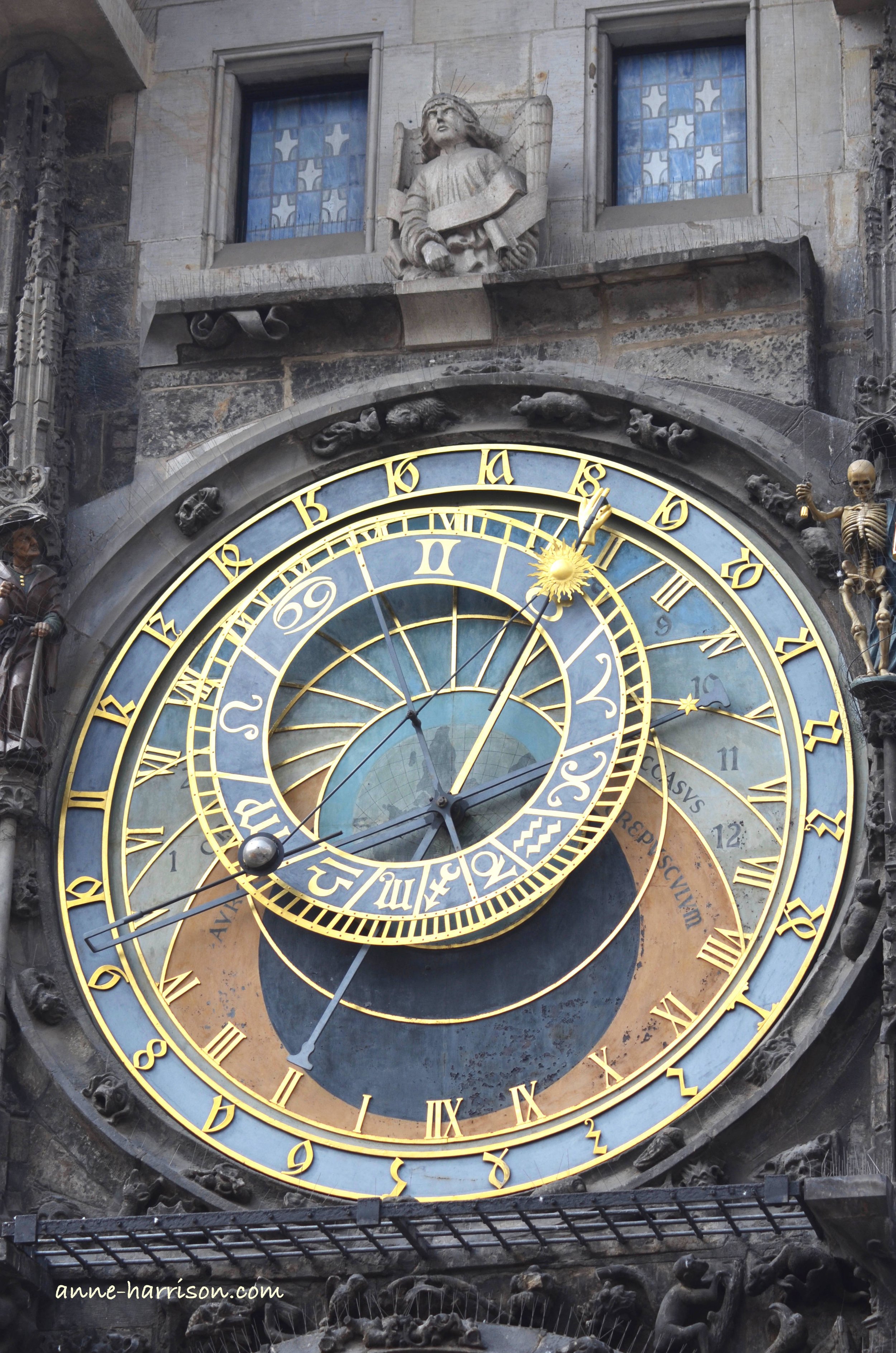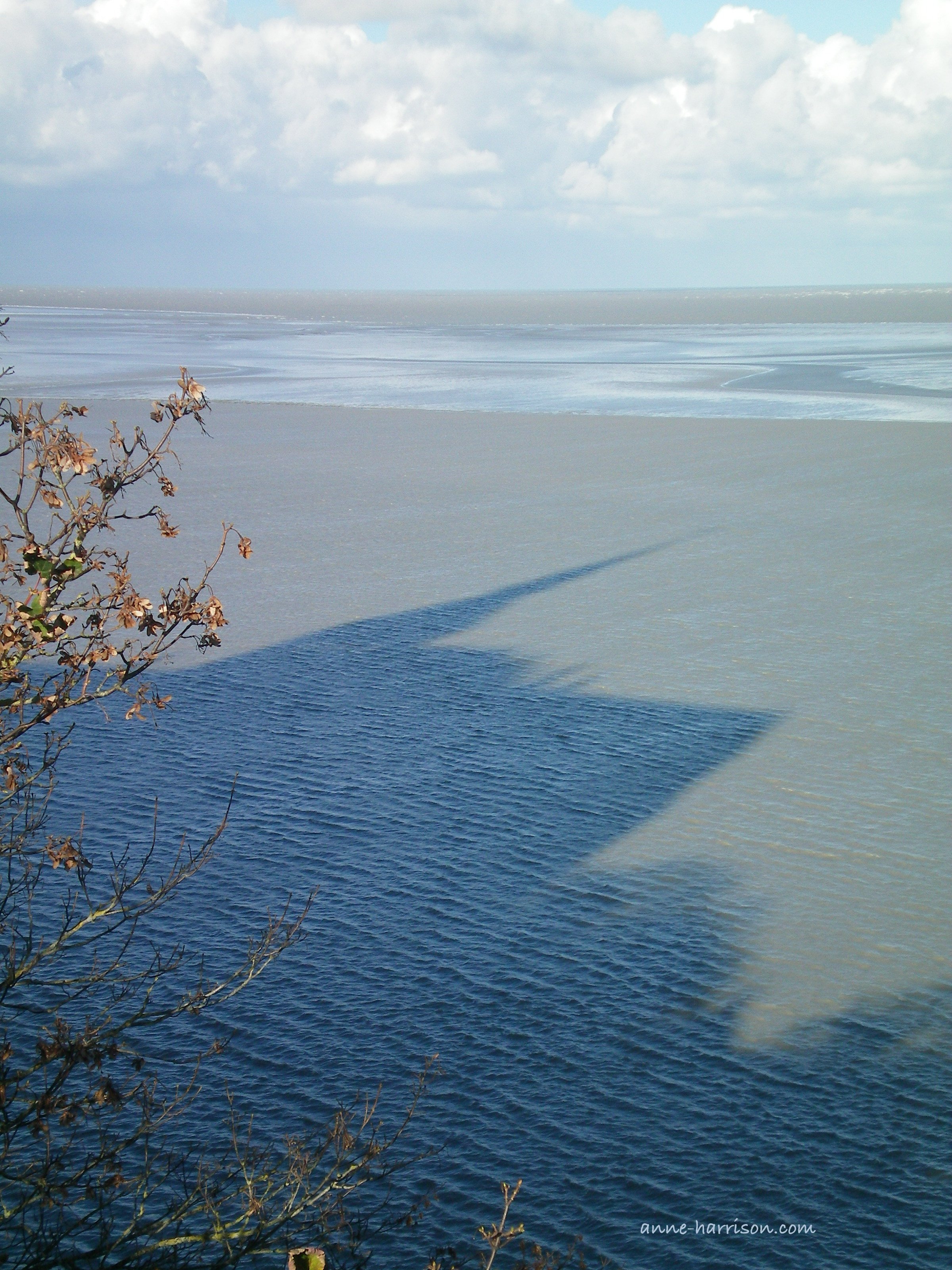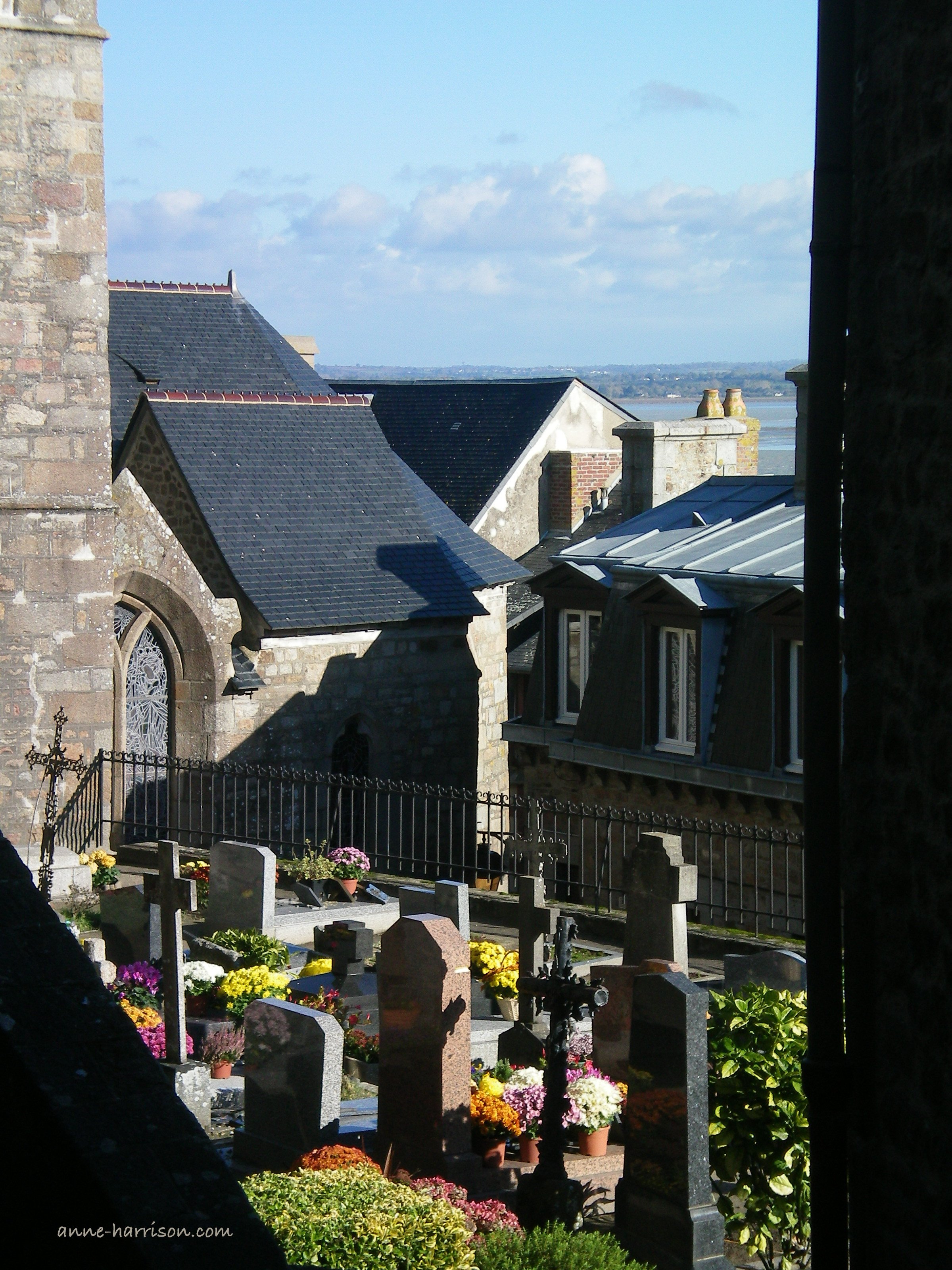Butter and the Paradox of Time
The famed astronomical clock of Prague © A. Harrison
I don’t do time.
I realised this as I sat eating breakfast while watching the sands of Mont St Michel disappear beneath the waves. Victor Hugo wrote of how the tides move à la vitesse d’un cheval au galop (as swiftly as a galloping horse). A bell tolls as the surge begins for, like many a medieval pilgrim before them, people still drown making their way across the tidal flats. The force of the rolling waves creates ever-changing fields of quicksand which confuse even the locals. The Bayeux Tapestry shows a trapped rider and horse, with the Abbey of Mont St Michel clearly visible in the background. Other riders are being rescued, with the words Hic Harold dux trahebat eos de arena embroidered beneath: (Duke Harold pulled them from the sand).
The grey sands literally do vanish; in the time it took to spread some fabulous Normandy butter on my croissant and have a sip of my café au lait, another island of sand had disappeared.
The cows in this area of Normandy are famous for their milk — and consequently their butter, cream and cheeses. The secret lies in the salt marshes which stretch along the coast; hence also the fame of the salt march lamb (not to mention the seafood). Yet the flavour cannot be explained by the terroir of Normandy alone. Since my first morning in Paris, I’d relished the taste of the butter each morning. Just a smidge on some fresh bread gave a taste of luxury — one secret of the French Paradox, where a nation imbibes fat-saturated food and has (or had, until the modern world came creeping in)one of the lowest levels of coronary artery disease in the world.
Returning home, as I sat with a macchiato and eating what the local supermarket had on offer, I set out to make my own butter. In doing so, I discovered another paradox: to make butter takes both a lot of time, and no time.
Butter takes up to a week to make, yet barely fifteen minutes in real time. First, cream is cultured to make crème fraîche. I heat the cream to blood temperature — perfect for the incubation of bacteria — then add the appropriate culture, such as an active crème fraîche. (An alternative is to simply add lemon juice.) To maintain the right temperature, I either place the mixture on a sunny window sill, or in winter in my greenhouse (which, aside from vegetable seedlings, is perfect for proving sourdough and fermenting cheese, though never on the same day, because of cross-contamination of cultures. I sometimes sit in there just to warm up.) By evening the crème fraîche is ready for use, but even refrigerated the flavour continues to develop over the next five to seven days.
The most time is taken in whipping the cream until the buttermilk separates — some five minutes. One minute I have a bowl of whipped cream which looks like it will never part; the next, buttermilk is spraying everywhere. After rinsing the butter with cold water, I then massage the mixture to extract all the buttermilk (which would otherwise turns the butter rancid), and ensuring a light texture in the process. I then finish off with wooden butter pats to remove the last of the water and pat the butter into shape. Of course, butter can be made straight from cream, saving a week of waiting (and ten minutes of my own time), but the depth of flavour is lost.
Which leads to the paradox of observed verses real time.
For something everyone knows, time remains intrinsically difficult to define. For the ancient Mayans and Babylonians, as well as in Buddhist teaching, time is conceived as a wheel, an unending cycle from birth to death to re-birth for every being of the universe (as anyone who has worked night shifts will readily testify).
In modern scientific terms, time is a measuring system used to calculate the duration, sequence and intervals between events, and to quantify rates of change. Two main theories of time divide philosophers and scientists. Newtonian theory holds time to be part of the fundamental structure of the universe, a dimension in which events occur in sequence. Time and space are independent aspects of reality, existing independently of an observer. Consequently, each moment of time persists in the time line, although they are experienced only once.
Alternatively, (as proposed by both Gottfried Leibniz and Immanuel Kant), time is an intellectual structure. Rather than events flowing in a sequential order, time is a concept devised by humans to sequence and compare events. Time exists only in the relative motion between bodies. Hence time is neither an event nor an entity, and so cannot be, in itself, measured (or, consequentially, travelled; in contrast, Newtonian time allows for at least the theory of time travel.)
In Einstein’s theory of special relativity, time is added to Euclidean three-dimensional space, allowing the creation of a four-dimensional framework for measuring spacetime. This mathematical model combines space (in three dimensions) and time (as a fourth dimension, different to the spatial dimensions) into a single continuum. The result is termed Minkowski space, after the German mathematician Hermann Minkowski.
In classic mechanics, time is constant and universal, independent of the state of motion of the observer. In Einstein’s theory of relativity, however, since time cannot be separated from the three dimensions of space, the observed rate at which time passes for one object is dependent upon the object’s velocity relative to the observer.
Hence two observers may measure different distances, times and even ordering of events if the observers themselves are moving at different velocities. To further complicate the concept, the Lorentz transformation (named after the Dutch physicist Hendrick Lorentz) converts these observations into each observer’s frame of reference. In essence, the Lorentz transformation rotates four-dimensional space (with time as the fourth dimension), causing time and space — along with all other derivative physical quantities, such as momentum, force, and energy — to create a four-dimensional entanglement, perhaps best described by a famous time lord “as a ball of wibbly-wobbly timey-wimey bits” (The Tenth Doctor, Dr Who, Blink).
Gravitational fields can slow the passage of time. Time also slows at higher speeds of reference (termed reference frames) of one object to another. Called time dilation, this was shown by atomic clocks aboard the space shuttle running slower than synchronised Earth bound inertial clocks.
But at my back I always hear / Time wingèd chariot hurrying near Andrew Marvell To His Coy Mistress
Yet the concept of combining time and space into one continuum is not new; in The Time Machine (1895) HG Wells wrote “any real body must have extensions in four directions: it must have Length, Breadth, Thickness and Duration.” Indeed, Woody Allen claims the reason he is always late is because the universe is expanding, and hence it takes longer to get anywhere.
Perhaps this is why, as he battled for control of the English throne following the death of Edward the Confessor (who had married his sister), Harold Godwinson put his faith in foot-soldiers and not a cavalry. After defeating the Norwegian Viking army at Stamford Bridge (near York), Harold’s army was forced to march nearly the length of the country to face William II, Duke of Normandy at Senlac Hill. Covering the distance in nineteen days, Harold’s army arrived battle-weary and exhausted. Had his army been relatively refreshed, the Battle of Hastings may have ended differently, and the course of history changed.
These vagaries of history lead back to why I make my own butter. Despite all our time-saving devices, we are forever reminded ours is a time-poor society. Yet this seems a paradoxical luxury — is the world really that much busier than thirty, sixty or a thousand years ago? Is this instead a self-fulfilling myth: if one is busy, one must be important. The list of reasons to be busy is as endless as anyone wishes to make it — but if the important busy people are time-poor, perhaps it is time to wonder what it must be like to be a no-one and be time-rich, spreading home-made butter on freshly baked sour dough and, like Newton, standing on the shoulders of giants.
Enjoy my writing? Please subscribe here to follow my blog. Or perhaps you’d like to buy me a coffee? (Or a pony?)
If you like my photos please click either here or on the link in my header to buy (or simply browse) my photos. Or else, please click here to buy either my poetry or novel ebooks. I even have a YouTube channel. Thank you!
Plus, this post contains affiliate links, from which I (potentially) earn a small commission.











Which side of the footpath to walk on reflects what country I’m in. It doesn’t always follow the road rules, and being jet-lagged never helps.